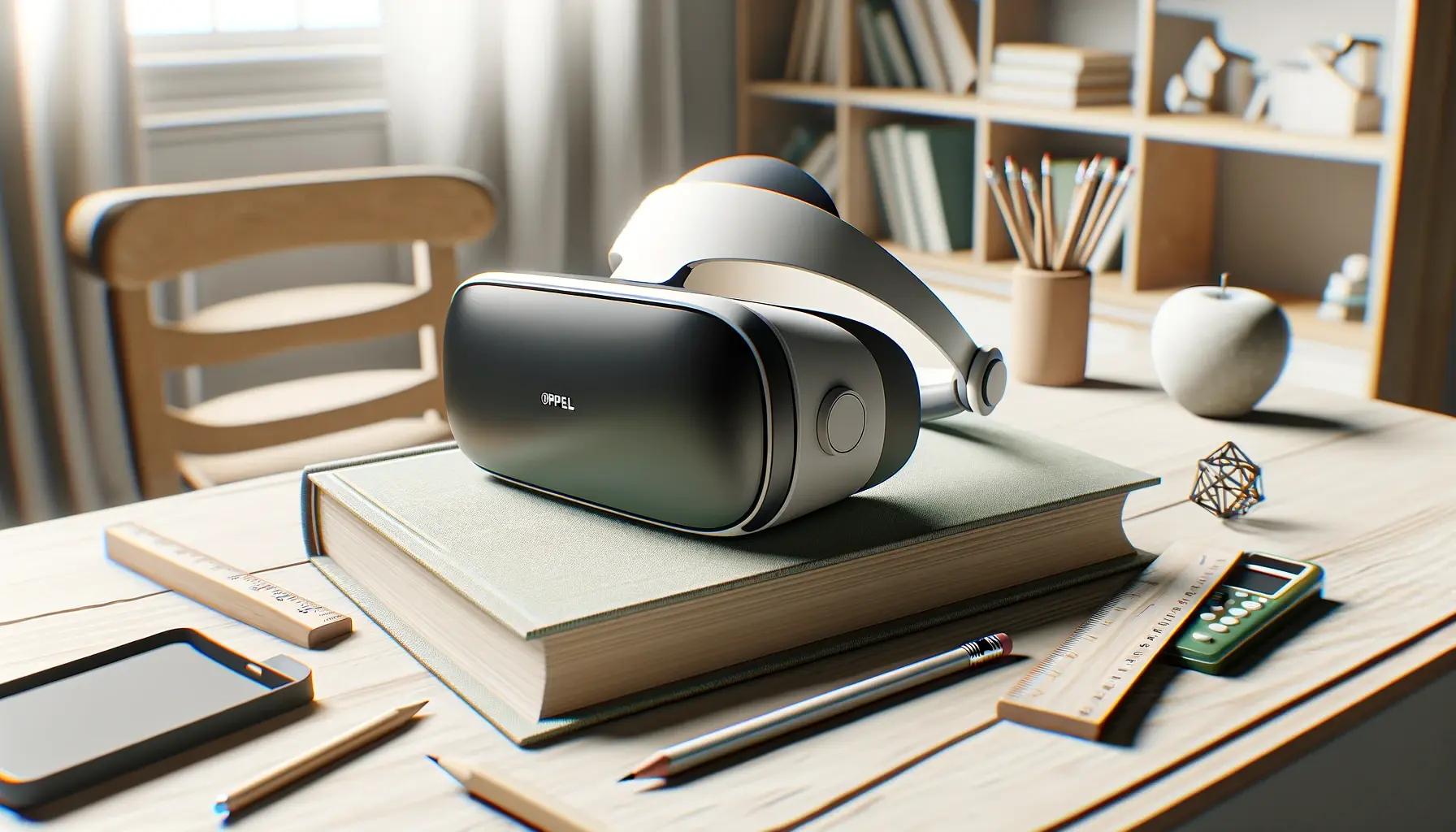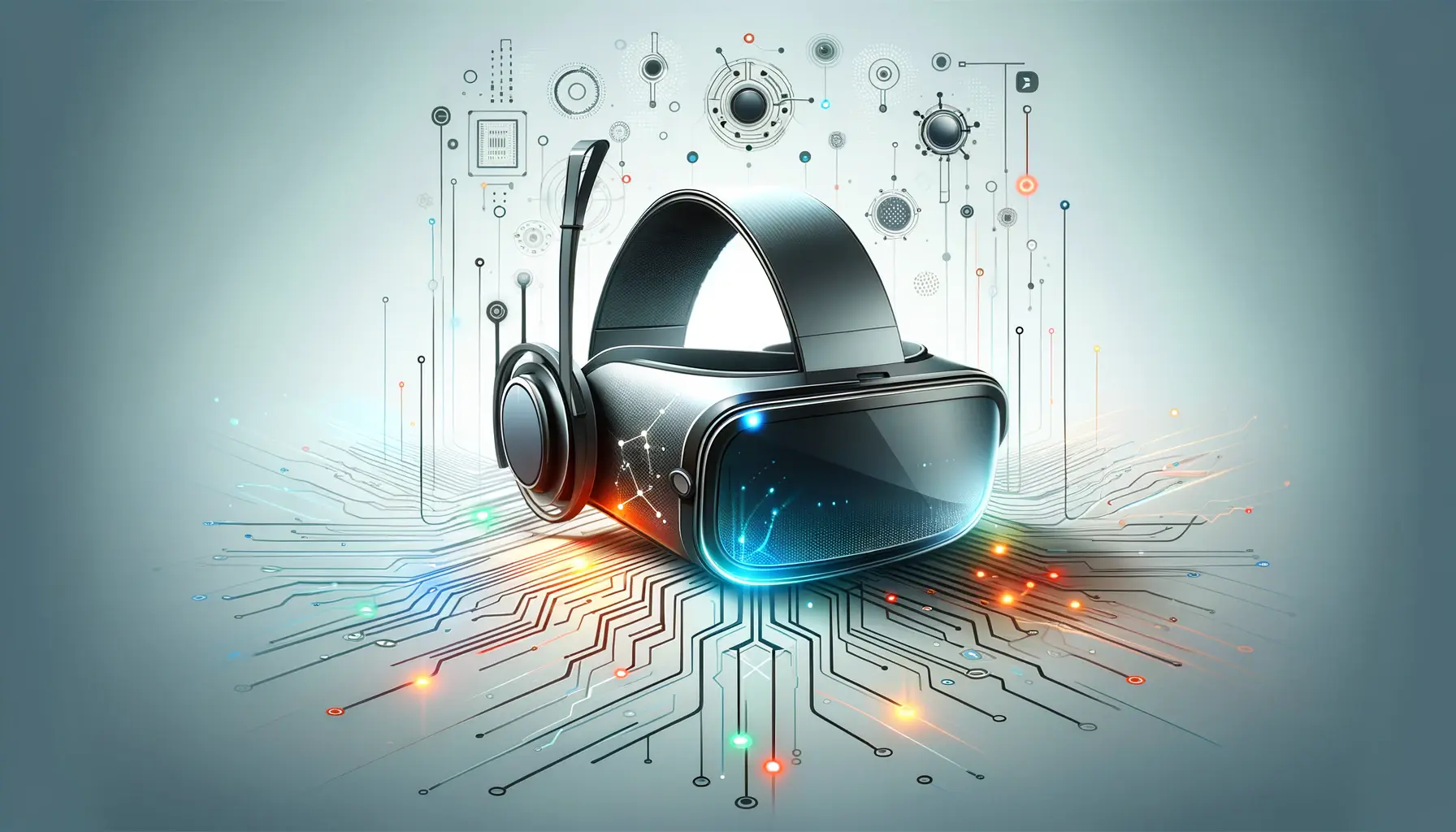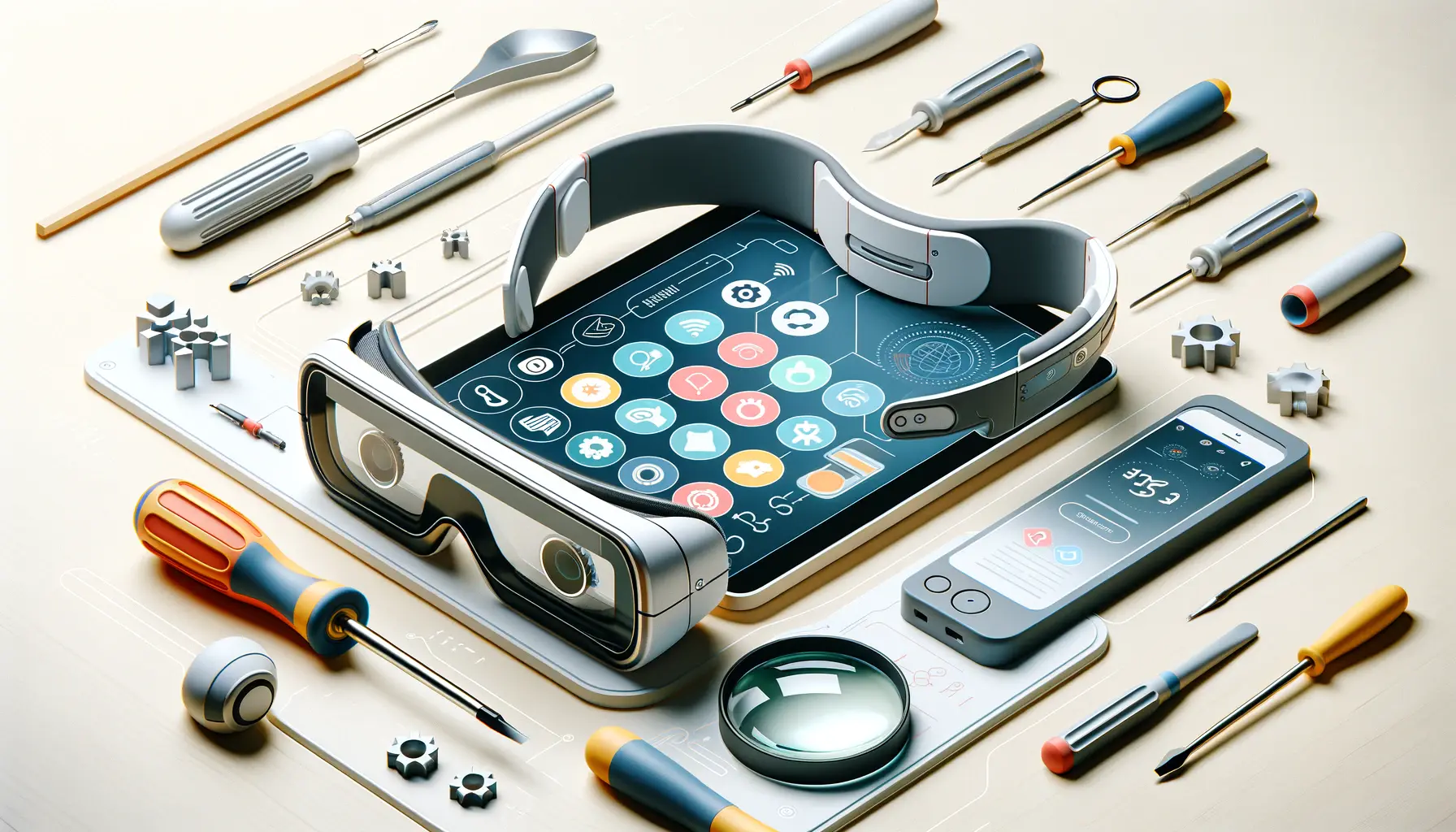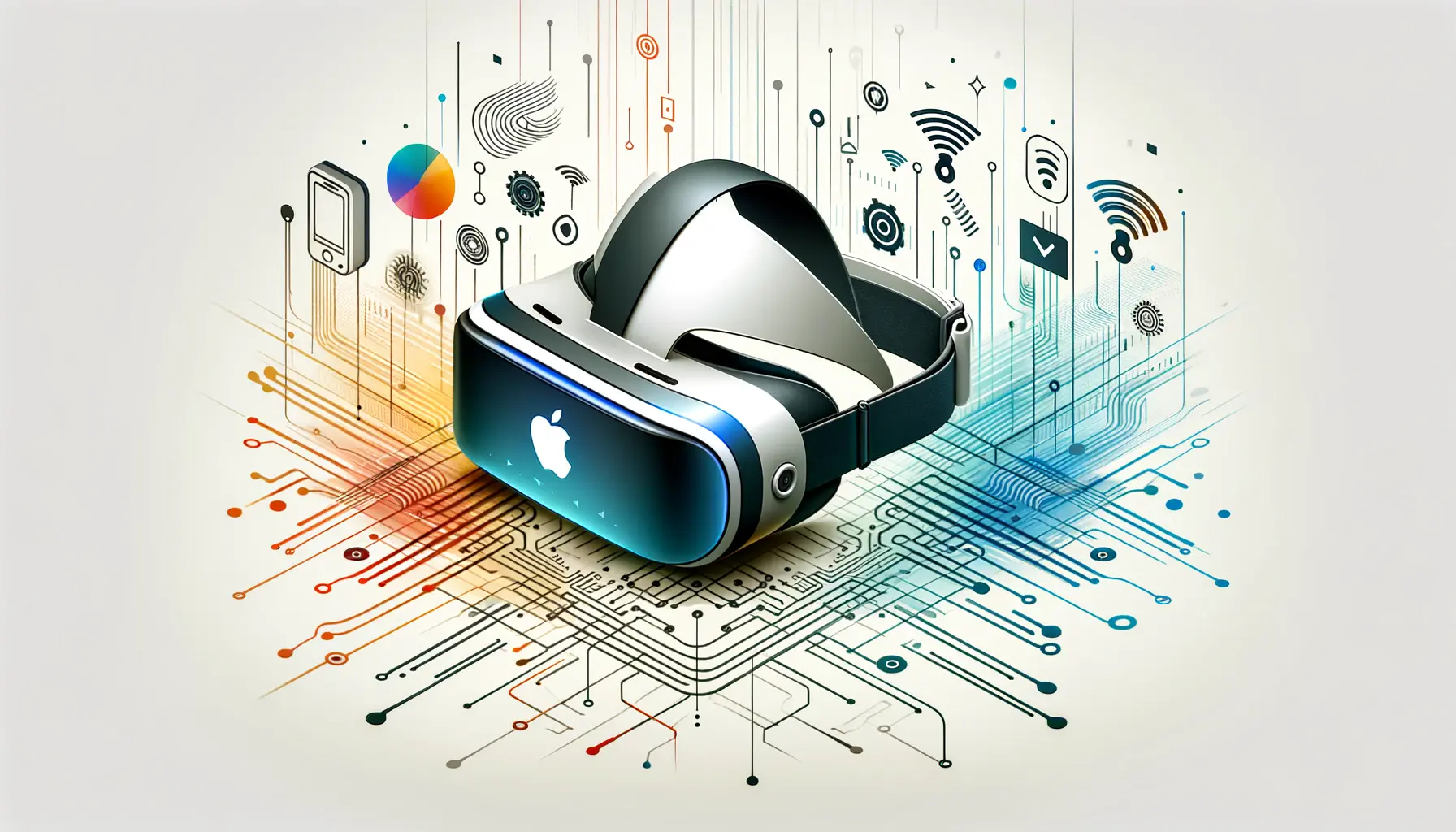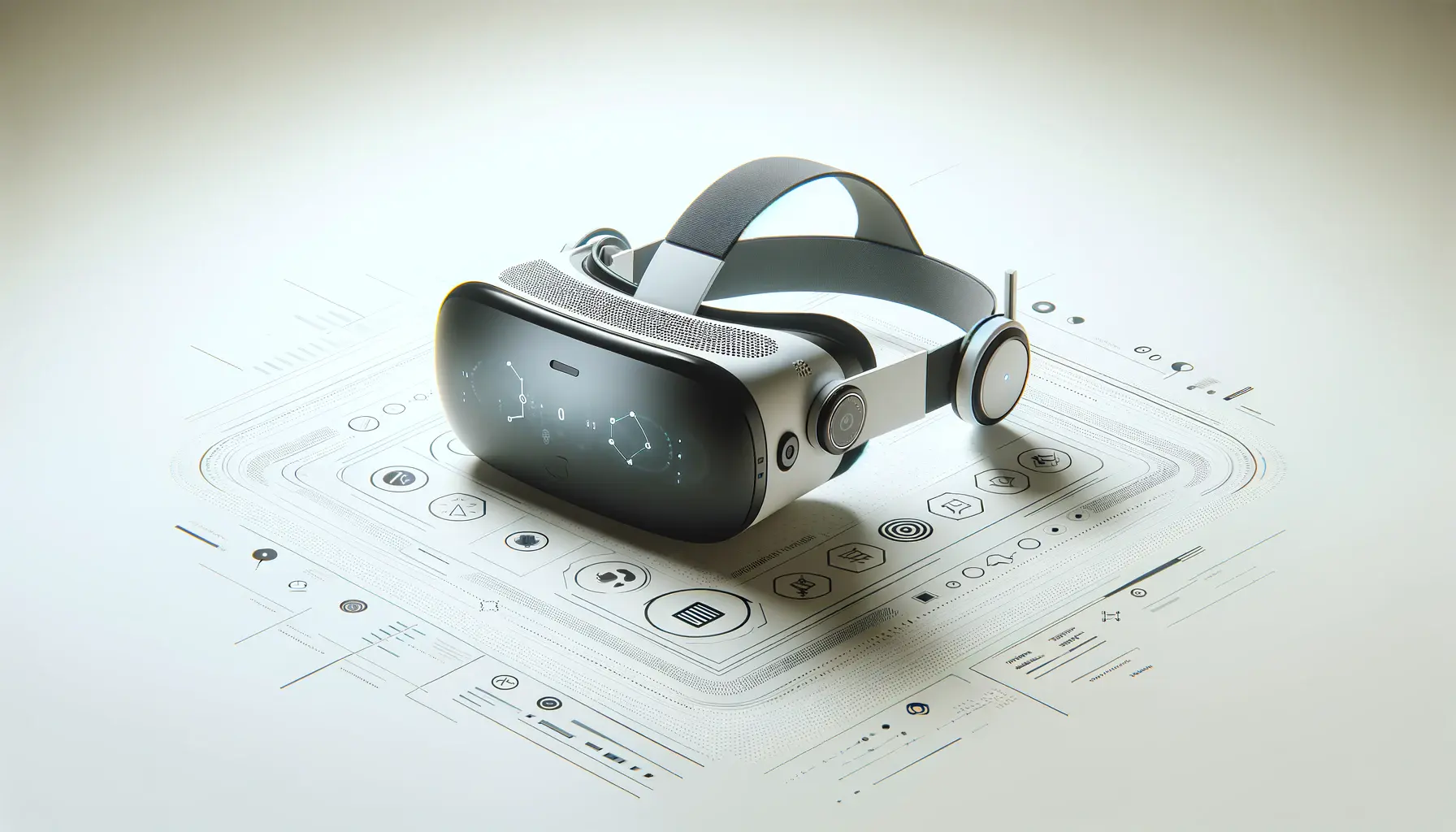The introduction of Apple Vision Pro marks a significant leap forward in the realm of educational technology, heralding a new era that promises to transform traditional learning environments into immersive, interactive spaces.
This groundbreaking device, with its blend of augmented reality (AR) and virtual reality (VR) capabilities, is not just another tech gadget; it’s a tool poised to redefine the educational landscape, making learning more engaging, accessible, and effective.
At the heart of this transformation is the concept of spatial computing, which Apple Vision Pro leverages to merge digital content with the physical world around us.
This integration opens up unprecedented opportunities for educators and students alike, offering a new dimension of interactive learning that goes beyond the confines of textbooks and screens.
The potential of Apple Vision Pro in education is vast, ranging from immersive historical explorations to complex scientific simulations, all designed to enhance the learning experience and foster a deeper understanding of the subject matter.
- Revolutionizing Classroom Interactions
- Empowering Educators with Advanced Tools
- Overcoming Challenges in Education Through Technology
- Case Studies: Apple Vision Pro in Action
- Integrating Apple Vision Pro into Curriculum Development
- Future Prospects: The Evolution of Education with Apple Vision Pro
- Building a Community of Practice Around Apple Vision Pro
- Embracing the Future of Education with Apple Vision Pro
- Apple Vision Pro in Education: FAQs
Revolutionizing Classroom Interactions
Creating Immersive Learning Experiences
The Apple Vision Pro’s spatial computing capabilities allow for the creation of immersive learning experiences that can captivate students’ attention like never before.
Imagine history lessons where students can virtually walk through ancient civilizations, or science classes where they can explore the human body from the inside, witnessing the complexity of its systems in 3D.
This level of interaction not only makes learning more engaging but also aids in the retention of knowledge by providing a visceral connection to the material.
Moreover, the device’s intuitive interface, powered by eye tracking, hand gestures, and voice commands, ensures that students of all ages and abilities can navigate these virtual environments with ease.
This inclusivity is a cornerstone of Apple Vision Pro’s design, ensuring that education is accessible to everyone, regardless of their physical capabilities.
Enhancing Collaboration and Communication
Apple Vision Pro also stands to revolutionize the way students collaborate and communicate within the educational setting.
Through virtual environments, students can work together on projects and experiments, even if they are miles apart.
This ability to collaborate in real-time, within a shared virtual space, breaks down geographical barriers and opens up new possibilities for global education initiatives.
The device’s integration with existing Apple services, such as FaceTime, further enhances its potential as a tool for communication.
Educators can host virtual classes, bringing together students from around the world in a dynamic and interactive learning environment.
This global classroom concept not only enriches the educational experience but also prepares students for the increasingly interconnected world they will face outside of school.
The Apple Vision Pro’s blend of AR and VR technologies offers a unique opportunity to transform traditional education into an immersive, interactive journey, making learning a more engaging and effective process for students worldwide.
Empowering Educators with Advanced Tools
The advent of Apple Vision Pro in the educational sector is not just a boon for students but also empowers educators with a suite of advanced tools designed to enhance teaching methodologies.
By integrating this technology into the curriculum, teachers can unlock new pedagogical strategies that cater to diverse learning styles, ensuring that each student can benefit from a personalized learning experience.
One of the most significant advantages of Apple Vision Pro is its ability to present complex concepts in a visually engaging and interactive manner.
This capability is particularly beneficial in subjects that traditionally rely heavily on abstract theories or require a strong visual understanding, such as mathematics, physics, and biology.
Customizable Learning Environments
- With Apple Vision Pro, educators can create customizable learning environments tailored to the subject matter. For instance, a biology teacher can design a 3D model of the human body for a lesson on anatomy, allowing students to explore each system in detail.
- These environments can be adjusted to suit different learning paces, enabling teachers to provide additional support to students who need it while allowing others to advance at their own speed.
Real-time Feedback and Assessment
- The device’s sophisticated sensors and tracking capabilities offer teachers real-time feedback on students’ engagement and understanding. This immediate insight allows educators to adjust their teaching strategies on the fly, addressing any areas of confusion before moving on to new material.
- Furthermore, Apple Vision Pro can facilitate more dynamic and interactive assessments. Rather than relying solely on traditional tests and quizzes, teachers can incorporate practical, hands-on tasks within the virtual environment as part of the evaluation process.
Professional Development and Resource Sharing
Apple Vision Pro also serves as a platform for professional development among educators.
Through shared virtual spaces, teachers can exchange resources, lesson plans, and teaching strategies, fostering a collaborative community of practice.
This exchange not only enriches the educators’ toolkit but also ensures that the most effective and innovative teaching methods can be disseminated across the globe, raising the standard of education universally.
Incorporating Apple Vision Pro into the classroom offers a multifaceted approach to education, where learning is not just about absorbing information but experiencing and interacting with knowledge.
This shift towards an immersive educational model has the potential to significantly improve learning outcomes, making education a more engaging, effective, and inclusive process.
Integrating Apple Vision Pro into educational practices offers a revolutionary approach to teaching and learning, providing an immersive, interactive experience that caters to the diverse needs of students and empowers educators with cutting-edge tools.
Overcoming Challenges in Education Through Technology
The integration of Apple Vision Pro into the educational landscape presents a unique opportunity to address and overcome longstanding challenges in education.
By harnessing the power of spatial computing, educators and institutions can tackle issues of engagement, accessibility, and personalized learning, paving the way for a more inclusive and effective educational system.
One of the critical challenges in traditional education systems is maintaining student engagement.
In a world where digital distractions are omnipresent, capturing and retaining the attention of students has become increasingly difficult.
Apple Vision Pro, with its immersive learning experiences, offers a solution to this problem by making learning an engaging and interactive process.
Enhancing Accessibility and Inclusion
- Apple Vision Pro’s intuitive design and interface make education more accessible to students with disabilities. Features such as voice control, eye tracking, and gesture recognition allow students with different abilities to interact with content in ways that suit their needs.
- This technology also breaks down geographical barriers, enabling students from remote areas to access quality education and participate in global learning communities.
Facilitating Personalized Learning
- Personalized learning has long been recognized as an effective approach to education, yet implementing it on a large scale has been challenging. Apple Vision Pro’s capabilities allow for the creation of personalized learning paths, where content can be adapted to fit the learning style and pace of each student.
- Teachers can use the device’s analytics and feedback systems to monitor progress and adjust lessons accordingly, ensuring that every student can achieve their full potential.
Preparing Students for the Future
As the world becomes increasingly reliant on technology, preparing students for the future means equipping them with digital literacy and problem-solving skills.
Apple Vision Pro introduces students to advanced technology and immersive learning, helping them develop the skills necessary for success in the 21st century.
By integrating real-world applications and simulations, students can gain hands-on experience in various fields, from engineering to environmental science, making their education more relevant and applicable to their future careers.
Addressing these challenges through technology like Apple Vision Pro not only enhances the quality of education but also ensures that it is more equitable and accessible.
As educational institutions continue to adopt and integrate such technologies, the potential for transformative change in the sector grows, promising a brighter future for learners around the world.
The adoption of Apple Vision Pro in education addresses key challenges by making learning more engaging, accessible, and personalized, thereby preparing students for a technology-driven future.
Case Studies: Apple Vision Pro in Action
The theoretical benefits of Apple Vision Pro in education are compelling, but real-world applications and case studies provide concrete evidence of its transformative potential.
Across the globe, pioneering institutions and educators have begun to integrate Apple Vision Pro into their teaching methodologies, yielding remarkable results in student engagement, comprehension, and performance.
These case studies not only highlight the device’s versatility across different subjects and educational levels but also offer valuable insights into best practices for its implementation in the classroom.
Revolutionizing Medical Education
One notable case study involves a medical school that has integrated Apple Vision Pro into its anatomy and physiology courses.
By utilizing the device’s immersive 3D models, students can explore the human body in unprecedented detail, from the macroscopic structure of organs down to the microscopic level of cells and tissues.
This hands-on approach has led to a deeper understanding of complex biological processes and a significant improvement in students’ ability to diagnose and treat conditions.
The feedback from both students and faculty has been overwhelmingly positive, with many noting that the technology has made learning more interactive and engaging, thereby reducing the learning curve for challenging subjects.
Enhancing Architectural Design and Visualization
Another case study comes from an architecture school where Apple Vision Pro is used to teach design and visualization.
Students wearing the device can walk through their 3D models, experiencing their creations on a 1:1 scale.
This immersive experience allows for a more intuitive understanding of space, proportion, and materiality, which are crucial aspects of architectural design.
Furthermore, the ability to collaboratively work on projects in a shared virtual space has fostered a more collaborative learning environment, encouraging creativity and innovation.
Professors have reported that projects developed with the help of Apple Vision Pro are more sophisticated and considerate of real-world constraints, demonstrating the device’s potential to enhance educational outcomes.
Transforming History Education with Virtual Time Travel
A high school history class provides a further example of Apple Vision Pro’s educational applications.
Here, students embark on virtual time-traveling expeditions to ancient civilizations, experiencing historical events as if they were there.
This immersive approach has made history lessons more engaging and memorable, with students showing a greater interest in the subject and a better retention of historical facts and contexts.
Teachers have observed that students who learn through these immersive experiences develop a more nuanced understanding of historical events and their impacts, highlighting the device’s ability to make abstract concepts more tangible and relatable.
These case studies underscore the versatility and impact of Apple Vision Pro in education, demonstrating its potential to revolutionize how subjects are taught and learned.
By providing students with immersive, interactive experiences, Apple Vision Pro not only enhances learning outcomes but also prepares students for a future in which digital literacy and technological proficiency are paramount.
Real-world applications of Apple Vision Pro in education sectors such as medicine, architecture, and history showcase its potential to revolutionize learning experiences and outcomes.
Integrating Apple Vision Pro into Curriculum Development
The successful integration of Apple Vision Pro into educational settings requires thoughtful curriculum development and strategic planning.
This process involves not only the technical setup of the devices but also a comprehensive reevaluation of teaching methods and learning objectives.
By aligning the technology with educational goals, institutions can maximize the benefits of Apple Vision Pro, creating a more engaging, effective, and personalized learning experience for students.
Curriculum development for Apple Vision Pro involves several key steps, each designed to ensure that the technology enhances rather than disrupts the educational process.
Identifying Educational Goals and Objectives
- Before integrating Apple Vision Pro into the curriculum, educators must clearly define their educational goals and objectives. This clarity helps in selecting content and designing experiences that align with the desired learning outcomes.
- For example, if the goal is to enhance understanding of complex scientific concepts, the curriculum might include immersive simulations of molecular or ecological processes.
Developing Interactive and Immersive Content
- Creating content for Apple Vision Pro requires a shift from traditional educational materials to interactive and immersive experiences. This might involve developing 3D models, simulations, or virtual environments that students can explore.
- Collaboration with content developers or leveraging existing educational apps designed for Apple Vision Pro can facilitate this process.
Training Educators and Students
- Effective implementation of Apple Vision Pro in education also depends on the training provided to both educators and students. Educators need to be comfortable with the technology, understanding its capabilities and how to integrate it into their teaching.
- Similarly, students should be given an orientation on how to use the device, with a focus on navigating the interface and engaging with the content.
Evaluating and Adapting the Curriculum
Once Apple Vision Pro is integrated into the curriculum, continuous evaluation is crucial to assess its impact on learning outcomes.
Feedback from students and educators can provide insights into what works well and what needs improvement.
This iterative process ensures that the curriculum remains relevant, engaging, and aligned with educational objectives.
Moreover, as technology evolves, the curriculum must also adapt to incorporate new features and capabilities of Apple Vision Pro.
Staying updated with the latest developments ensures that students have access to cutting-edge educational experiences.
Integrating Apple Vision Pro into curriculum development is a dynamic and ongoing process that requires collaboration, creativity, and a commitment to enhancing education.
By carefully planning and executing this integration, educators can unlock the full potential of this technology, creating an immersive learning environment that prepares students for the challenges of the future.
Strategic curriculum development is essential for the effective integration of Apple Vision Pro into education, ensuring that the technology aligns with and enhances learning objectives.
Future Prospects: The Evolution of Education with Apple Vision Pro
The introduction of Apple Vision Pro into the educational sphere is just the beginning of a significant transformation in how education is delivered and experienced.
As this technology matures and becomes more integrated into classrooms around the world, its potential to revolutionize the educational landscape continues to expand.
Looking forward, several key trends and developments are expected to shape the future of education through the lens of Apple Vision Pro and similar technologies.
These future prospects not only highlight the growing importance of digital literacy and technological proficiency in modern education but also underscore the need for educational systems to adapt to the changing landscape to provide students with the skills and knowledge necessary for success in the 21st century.
Widespread Adoption and Accessibility
- As the cost of technology decreases and its ease of use improves, Apple Vision Pro is expected to become more accessible to schools across different socio-economic backgrounds, leading to widespread adoption.
- This increased accessibility will help bridge the digital divide, ensuring that students from all backgrounds have equal opportunities to benefit from immersive and interactive learning experiences.
Enhanced Personalization and Adaptive Learning
- Future iterations of Apple Vision Pro will likely incorporate advanced AI and machine learning algorithms, enabling even more personalized and adaptive learning experiences.
- These technologies can analyze students’ learning habits, preferences, and performance in real-time, adjusting the curriculum dynamically to meet their individual needs and optimize learning outcomes.
Integration with Emerging Technologies
- Apple Vision Pro’s capabilities will be further enhanced through integration with other emerging technologies such as blockchain for secure and transparent educational records, IoT devices for interactive learning environments, and 5G networks for seamless and high-speed connectivity.
- This integration will enable new forms of collaboration, experimentation, and exploration, making education more engaging and effective.
Preparing Students for Future Careers
The evolution of education with Apple Vision Pro is not just about enhancing how subjects are taught but also about preparing students for the careers of the future.
By exposing students to cutting-edge technology and immersive learning experiences, educators can help develop critical thinking, creativity, and technological proficiency—skills that are increasingly in demand in the modern workforce.
As education continues to evolve with technologies like Apple Vision Pro, the possibilities are limitless.
The future of education is poised to be more inclusive, personalized, and aligned with the needs of a rapidly changing world.
By embracing these changes, educational institutions can ensure that they are providing students with the best possible preparation for the challenges and opportunities of the future.
The future of education with Apple Vision Pro promises a landscape where learning is more accessible, personalized, and closely aligned with the evolving demands of the modern world.
Building a Community of Practice Around Apple Vision Pro
The successful integration of Apple Vision Pro into educational environments hinges not only on the technology itself but also on the development of a robust community of practice.
This community, comprising educators, students, developers, and enthusiasts, plays a crucial role in sharing knowledge, experiences, and best practices for leveraging Apple Vision Pro in education.
Building such a community encourages collaboration, innovation, and continuous improvement, ensuring that the potential of this transformative technology is fully realized.
Creating a vibrant community of practice around Apple Vision Pro involves several key initiatives, each aimed at fostering engagement, support, and shared learning among its members.
Professional Development and Training Programs
- Offering professional development and training programs for educators is essential to equip them with the skills and knowledge needed to effectively use Apple Vision Pro in their teaching. These programs can range from online courses and workshops to webinars and conferences, covering various aspects of the technology, from basic operation to advanced instructional design.
- Such initiatives not only enhance educators’ proficiency with the device but also empower them to innovate and experiment with new teaching methodologies.
Collaborative Platforms and Forums
- Establishing online platforms and forums where community members can share experiences, ask questions, and exchange resources is another critical component. These platforms serve as a hub for collaboration, allowing educators to discuss challenges, share success stories, and develop new content and applications tailored to educational needs.
- Through these collaborative efforts, the community can drive the evolution of Apple Vision Pro in education, adapting and expanding its use across different subjects and educational levels.
Partnerships with Educational Institutions and Tech Companies
- Forging partnerships between educational institutions, technology companies, and content developers is vital for the growth and sustainability of the community. These partnerships can facilitate the development of new educational apps and experiences, research on the impact of Apple Vision Pro on learning outcomes, and the provision of resources and support for schools and teachers.
- Moreover, such collaborations can lead to the creation of pilot programs and case studies that further demonstrate the effectiveness of Apple Vision Pro in enhancing education.
Encouraging Student Involvement
Students play a pivotal role in the community of practice around Apple Vision Pro.
Encouraging their active involvement, whether through feedback, participation in design and development projects, or as ambassadors of the technology, is crucial.
Student-led initiatives and clubs focused on exploring and creating content for Apple Vision Pro can also drive innovation and engagement, making the learning experience even more relevant and exciting.
Building a community of practice around Apple Vision Pro is a dynamic and ongoing process that requires the commitment and collaboration of all stakeholders.
By fostering a supportive and innovative community, the educational potential of Apple Vision Pro can be fully unleashed, transforming learning experiences and outcomes for students around the world.
A strong community of practice is essential for maximizing the educational benefits of Apple Vision Pro, fostering innovation, collaboration, and continuous learning among educators, students, and developers.
Embracing the Future of Education with Apple Vision Pro
The journey through the transformative potential of Apple Vision Pro in education underscores a pivotal shift towards immersive, interactive learning environments.
As we’ve explored, this technology is not merely an accessory to traditional education but a cornerstone of a new era where digital spaces and physical realities converge to enhance learning experiences.
The integration of Apple Vision Pro into educational settings heralds a future where classrooms extend beyond four walls, engaging students in unparalleled ways and equipping them with the skills necessary for the digital age.
The Path Forward
As educational institutions and educators embrace Apple Vision Pro, the path forward involves continuous innovation, collaboration, and adaptation.
The development of a community of practice around this technology is crucial for sharing insights, overcoming challenges, and pushing the boundaries of what’s possible in education.
This community will serve as the backbone of the evolving educational landscape, driving the integration of Apple Vision Pro into diverse learning environments and ensuring that its benefits are accessible to all students.
Key Considerations for Successful Integration
- Professional development for educators to ensure effective use of Apple Vision Pro in teaching.
- Curriculum development that leverages the technology’s capabilities to meet educational goals.
- Collaboration between educational institutions, technology companies, and content developers to expand the ecosystem of resources and applications for Apple Vision Pro.
- Encouraging student involvement and feedback to tailor learning experiences and foster a sense of ownership and engagement with the technology.
In conclusion, the advent of Apple Vision Pro in education represents a significant leap forward in how we conceive of and deliver education.
By harnessing the power of this technology, educators can create immersive, interactive experiences that not only engage students but also prepare them for the challenges and opportunities of the future.
The journey ahead is filled with potential, and as we continue to explore and understand the impact of Apple Vision Pro on learning, we move closer to realizing a vision of education that is more inclusive, effective, and aligned with the digital era.
If you're seeking expertise in Apple Search Ads campaigns, visit our service page for professional management!
Apple Vision Pro in Education: FAQs
Explore commonly asked questions about integrating Apple Vision Pro into educational settings, offering insights into its application and benefits.
Apple Vision Pro transforms learning by creating immersive, interactive experiences that increase engagement and understanding of complex subjects.
Yes, its features like voice control, eye tracking, and gesture recognition make learning more accessible to students with various disabilities.
Apple Vision Pro is designed to be intuitive, making it suitable for learners of all ages, from young students to adults.
Subjects that involve complex visualizations like science, history, and architecture can greatly benefit from Apple Vision Pro’s immersive experiences.
Educators can integrate it by aligning the technology with educational goals, creating interactive content, and utilizing it for immersive learning experiences.
Educators need training on operating the device, integrating it into teaching strategies, and creating or sourcing educational content for it.
Yes, it offers unique opportunities for remote learning by enabling students to participate in virtual classrooms and collaborative projects.
The future looks promising with potential for wider adoption, enhanced personalization, and integration with emerging technologies to enrich education.
